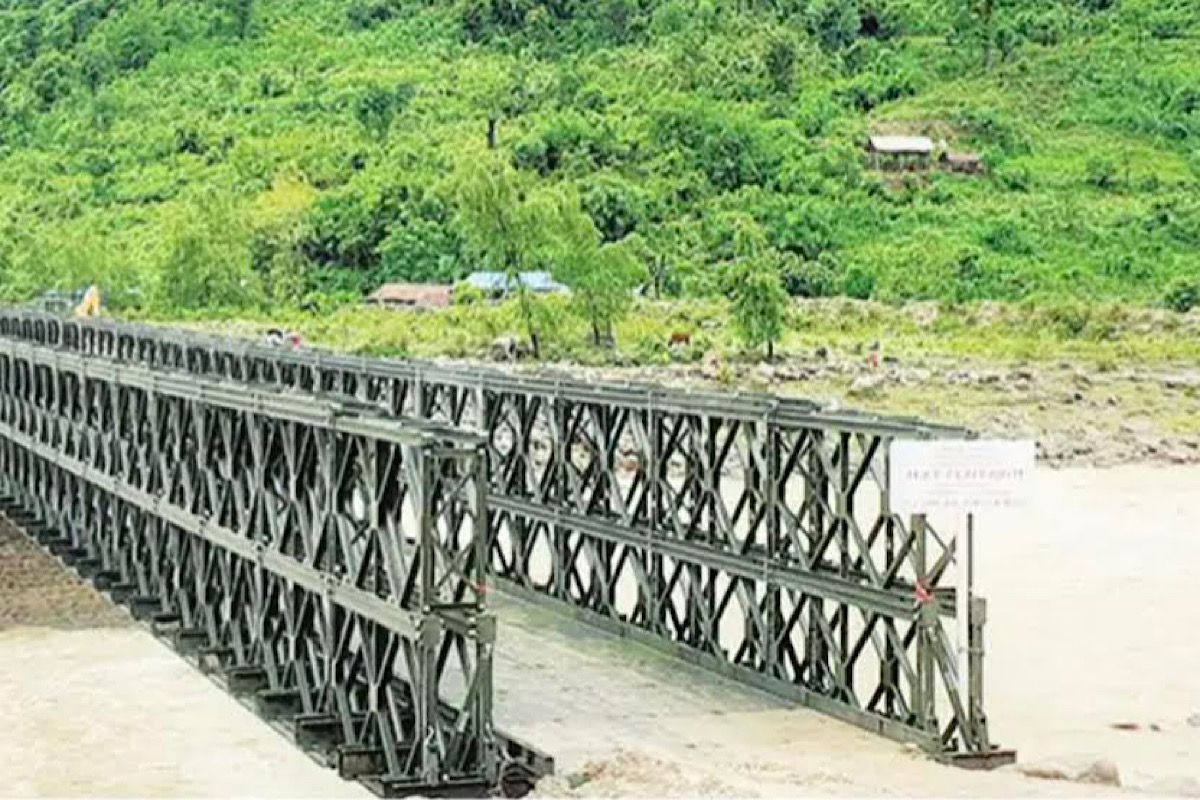The commendable growth in India’s road infrastructure is well known. It enables reduction in transportation costs and enhances economic growth. Closer to the borders, it boosts military logistics and adds to national security. But when a National Highway (NH) is utilised to 25 per cent capacity because of a single bridge being in distress in vulnerable border areas, exactly the reverse happens.
The huge investment is under-utilised leading to recurring economic losses each day. Military logistics are affected making us more vulnerable along our borders. It is a fact that this is happening because of a lack of capability to respond to distressed bridges adequately.
Advertisement
New technology allows it to be rectified in days. We need to understand and accept the problem first. The solution is then just round the corner and available at a minuscule fraction of the cost of what we are losing. Let me put the problem in perspective and examine how we can resolve it before the next monsoons, when the incidence of distressed bridges increases and the losses to the nation mount exponentially, in addition to adding to the woes of the soldiers on the front line.
There are numerous examples of National Highways being underutilised because of a single bridge in distress on the highway for long periods. These are bridges that were in distress and were replaced by narrow Bailey bridges which though a quick fix, have reduced the capacity of the highway to 25 per cent; the bridges now are single lane, allow crossing of one vehicle at a time with loads limited to two-axle, sixwheel trucks which carry barely 8-9 tons.
Compare this to the NH design capacity of Double Lane, Class A loads which can allow for heavier 14 and 16 wheel trucks, and you know the highway is grossly underutilised causing heavy economic loss.
To understand how huge the economic impact is let us take the example of NH 37 from Silchar to Imphal, one of the lifelines of the state of Manipur, which carries 20 to 30 per cent of the traffic. Because of the weak bridge in Irang, the capacity of the entire NH 37 is affected. The order of the losses thereof is close to Rs 1000 crore per annum.
A similar situation prevails on other National highways near the LAC. Military logistics can be a battlewinning factor. The Russia-Ukraine war has demonstrated its importance once again. To quote from a recent article I read where this was explained in the Indian context, “better connectivity reduces travel time and increases loads that can be carried on any road or ‘axis’ as the army would like to call some of these roads.
It means faster logistics build-up at a lesser cost. Along with quicker force build-up is the ability to take larger equipment further ahead. If it is a heavier gun, the fire-power reach is enhanced. If it is better monitoring equipment like radars and sensors, the surveillance cover is enhanced. Repair facilities also move up, reducing down- time of machines.
With better roads, barrackaccommodation can be closer to the front line, enhancing the efficiency of troops and their morale. Reduced turn-around for supplies to logistics areas is also a great advantage. The stocking levels can then be pruned, confident of a reliable line of replenishment. Food remains fresher, stores are more readily available.
Add this to better accommodation and other ancillaries and you have the man behind the machine more efficient and operating a better maintained machine.” So what happens if this logistics chain is hampered by a weak bridge? The investment on good roads comes to naught and the logistic flexibility of military commanders is lost.
Logistics is no more the battle winning factor which it should be. This is again because our capability to bridge in difficult conditions or in quick response to an emergency in hilly terrain, is restricted by the World War II vintage Bailey Bridge. Of what use is a wider road with a weak single-lane bridge?
Progressively, the number of such suboptimal bridges on two-lane roads and highways has increased. There are over 400 such bridges between our logistic areas and the troops on the Northern border in high altitude terrain and sub-zero temperatures far more challenging than Ukraine or any battle field in the world.
That these troops still deliver with a high morale speaks well of them, and very poorly of our infrastructure industry. It is a capability gap we need to address with better modular bridges. In India the response to bridges in distress has been Bailey Bridges, a modular steel panel bridge (MSPB), which proved its worth in World War II as one of the three innovations that helped the Allied victory, along with radars and heavy bombers.
This first generation MSPB has a limited load capacity and so is today at best a temporary bridge which becomes a bottle-neck where it is used. They have a life of only 25 years and are unsafe with trucks having higher axle loads. The rest of the world graduated to second-generation MSPBs in the 1970s and today uses third-generation Modular Bridges.
These can span up to 65m, take two-lane traffic and have a life of 100 years. They serve both as permanent bridges and as temporary detours in an emergency. To upgrade a highway, a Bailey Bridge can be replaced within a week using these third-generation bridges, as these too come in similar modules of 3 metres.
They have all the advantages of speed and flexibility of the Bailey Bridge, and yet meet Indian Road Congress norms for permanent bridges. One such 60 m double lane permanent bridge in 2016 was laid at Sonprayag in Uttarakhand, a big success. It is time such third-generation bridges were introduced in larger numbers. At a small cost the value obtained will be far higher, the results immediate.
For quick response, these thirdgeneration Modular Bridges must be stocked close to where they are required so that in an emergency they are available at site within a day or two. Stocking has to follow the model practised for Bailey Bridges presently by the Army/BRO.
This needs an imaginative policy to be introduced speedily. It will benefit road infrastructure in general and support military logistics. A combined approach towards positioning and stocking between the Ministry of Road Transport and Highways (MORTH) and the Army/BRO will save time and effort.
This is today a realistic possibility considering the Secretary, Defence has moved from MORTH and understands both the economic and the military implications due to this critical gap in our national capability for emergency response to distressed bridges.
To make a start before the next monsoons by creating reserve stocks of better MSPBs is a challenge that can pay huge dividends to the economy and greatly enhance our military capability. Can we do it? Yes we can, and we need to do it immediately.
(The writer is President Emeritus, International Road Federation and Chairman, ICT.)











